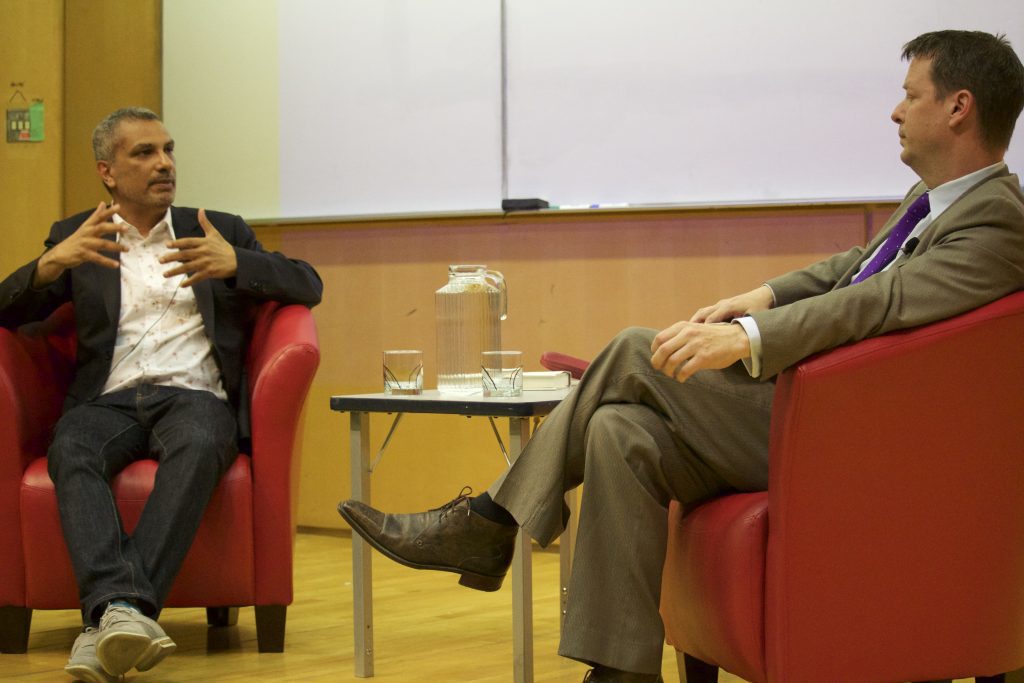By Allison Ridgway for the Ryerson Journalism Research Centre
When Kamal Al-Solaylee saw a group of Filipina maids enjoying a picnic in a Hong Kong park during their time off work one Sunday afternoon in 2011, the concept for his next book began to form. That idea solidified when, back home and riding the subway in Toronto, he again saw a large group of Filipina workers talking together and realized that both groups, though an ocean apart, shared two things in common: their work and their skin colour.
“I started thinking about the connection between skin colour and work,” explained Al-Solaylee, a professor at Ryerson’s School of Journalism. “I decided to try to write a book about skin colour, but it’s not really about skin colour. It’s about where skin colour becomes the gateway into something else.”
Al-Solaylee discussed his latest book, Brown: What Being Brown in the World Today Means (to Everyone) with The Globe and Mail’s Doug Saunders last week at an RJRC-hosted Q&A session.
Brown explores the complexities and shared experiences of people with brown skin from around the world. Al-Solaylee travelled to 10 countries and four continents over two years to talk with people from the Philippines, Qatar, the United Arab Emirates, Britain, Trinidad, France, Hong Kong, Sri Lanka, the United States and Canada about their experiences living as brown-skinned people in the world today. The book examines issues such as immigration, work conditions, economic marginalization, racism, Islamophobia, colourism and self-perception, all the while asking what experiences unite people from vastly different countries, cultures and backgrounds who all share one common trait: their brown skin.
“I wanted to show how similar all of these experiences are,” Al-Solaylee said during the Q&A, “and that’s why it was important for me to go to all of these different countries and try to find out how the same scenario unfolds in different countries.”
He found that brown-skinned people – particularly immigrants – often end up as transient labourers stuck in precarious jobs.
“We have brought in people to do work that we don’t want to do anymore,” he said. “What I find is that there is this mass population of brown people in the service industry, whether they’re in kitchens, supermarkets, driving cabs or cleaning…The one thing that unites all of them is cheap labour”

